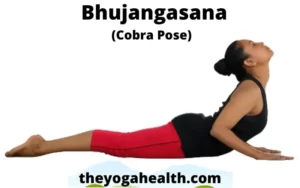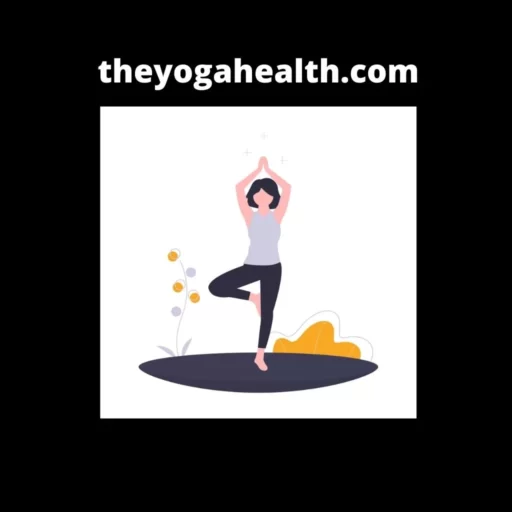Parsva Dhanurasana (Side Bow Pose) is a sideways back-bending yoga pose. In this pose, the body is rolled sideways after doing Bow Pose, to give more challenge to the body. This challenge makes it an intermediate-level Pose.
Table of Contents
Parsva Dhanurasana (Side Bow Pose)
In the Sanskrit language ‘Parsva’ means ‘sideways’ and Dhanu means ‘Bow’ and ‘asana’ means ‘Pose’ or ‘Posture’. In this yoga pose the body resembles the shape of a bow, hence the name. In this variation of Dhanurasana (Bow Pose) one has to perform the posture lying on one’s side.
Parsva Dhanurasana the body gracefully twists to one side while performing the backbend. In this asana the body takes the bow-like shape. This pose beautifully combines strength, flexibility, and balance, offering numerous benefits for both the body and mind.
In this yoga pose, the Dhanurasana or Bow Pose is performed sideways, therefore it deeply stretches each side of the body.
Parsva Dhanurasana Quick Details
| Sanskrit Name | Parsva Dhanurasana |
| English Name | Side Bow Pose |
| Difficulty level | Intermediate |
| Position | prone |
The Meaning Behind the Twisted Bow Pose
Parsva Dhanurasana represents the harmonious union of strength and flexibility, just like a bow that requires tension and flexibility to work effectively. It symbolizes the balance between effort and surrender, reminding us to gracefully navigate through life’s twists and turns.
Parsva Dhanurasana benefits the following body parts:
- Spine
- Abdominal Muscles
- Feet
- Ankles
- Knees
- Quadriceps
- Chest
How to do Parsva Dhanurasana (Side Bow Pose)
- Perform Dhanurasana (Bow Pose)
- Breath out and roll over to your right side and stretch your legs and chest.
- Breath in and come back to position Dhanurasana.
- Now breath out and roll over to your left side and again stretch your legs and chest.
- Stay in this pose on another side for the same length of time as per your capacity and strength with normal breathing.
- To come out of the pose breathe in and come back to Dhanurasana and release your legs and relax.
This variation of Dhanurasana is more difficult than the earlier one cause the ankles are inclined to slip from the handgrip. Therefore, grip your ankles more firmly.
While doing this pose many people fail to keep their legs together and the tendency is that the upper knee is lifted, which is an incorrect method and needs to be corrected in time to get the maximum benefit out of the pose.

Section 5: Benefits of Parsva Dhanurasana in Ailments
Parsva Dhanurasana provides specific benefits for various ailments:
Back Pain: The gentle twist and backbend can alleviate mild to moderate lower back pain and promote a healthy spine.
Digestive Issues: The twisting action aids in relieving indigestion, bloating, and constipation.
Respiratory Problems: The chest-opening aspect of the pose improves lung capacity and helps with respiratory issues like asthma.
Stress and Anxiety: The pose releases tension in the chest and shoulders, calming the mind and reducing stress and anxiety.
Precautions
- Do not do this pose after having heavy meals, you need to give at least 3 to 4 hours of gap between the meals and perform this yoga pose.
- Make sure that your body is sufficiently warmed up before going for this pose.
- Do not bend your elbows while pulling your thighs and chest. Equally maintain the pulling force with your hands on your upper as well as lower body.
Preparatory and Follow-Up Poses of Parsva Dhanurasana
Preparatory Poses:
Setu Bandhasana (Bridge Pose)
Follow-Up Poses:
Ardha Matsyendrasana (Half Lord of the Fishes Pose)
Contraindications
- Avoid this pose if you are suffering from headache or swear migraine pain.
- In case of a hernia avoid this pose, as it can aggravate the problem.
- Women during pregnancy should avoid this yoga pose.
- If you are suffering from any neck, or lower back injury then avoids this yoga pose.
- People suffering from heart diseases should not do this pose.
- If you have undergone any recent operation or surgery particularly related to stomach areas then also you should avoid this pose.
Parsva Dhanurasana Benefits
1. Stimulate and strengthen abdominal organs.
The sideways Dhanurasana massages the abdominal organs by pressing against the floor.
2. Improvement in the respiratory system
The Side Bow Pose fully expands the chest and the lungs, which enhances the breathing capacity. The regular practice of this yoga pose helps in curing many respiratory ailments like asthma.
3. Improves digestion
As in this pose, the abdominal areas are greatly stretched which improves the functions of all abdominal organs and particularly helps in the improvement of digestion-related issues.
4. Strengthen the reproductive system.
The stretching in this yoga pose stimulates reproductive organs of the body and sends fresh blood into this area thereby improving its functioning. The regular practice of this yoga pose makes the reproduction system very healthy.
5. Improvement in posture
This yoga pose makes the spine lengthy and flexible. It also helps in removing any deformity like hunching of the back. The regular practice of this pose corrects the body posture.
6. Stimulates the glands
This pose stimulates and massages the liver, kidneys, pancreas, and adrenal glands, thereby improving their functioning.
6. Stretches and strengthens muscles
The Side Bow Pose stretches and strengthens the spine, neck, chest, abdomen, arms, legs, and shoulders, which helps in making the body flexible. Along with increasing flexibility, it also makes muscles stronger.
7. Obesity
The regular practice of this pose helps in shedding extra fat in the body, particularly around the belly, thighs, arms, and hips.
Conclusion:
Parsva Dhanurasana (Side Bow Pose) is a beautiful fusion of strength, flexibility, and balance that offers an array of benefits for the body, mind, and soul. As you gracefully embrace the twisted bow pose, you’ll discover the power of harmony and self-awareness.
Remember that yoga is a journey, and each asana has its unique gifts to offer. So, unroll your mat, breathe deeply, and embark on the path of Parsva Dhanurasana – a dance of grace, strength, and transformation.
The practitioner of Parsva Dhanurasana (Side Bow Pose) apart from getting all the benefits of Dhanurasana (Bow Pose) also gets extra benefits from this variation as it is more challenging for the practitioners. It also gives lots of confidence and relaxation to the mind.
FAQ: Side Bow Pose
Q1. What does Dhanurasana cure?
Ans: Dhanurasana and its variations cure many diseases and ailments like it
Improve digestion and appetite, weight loss, gastrointestinal problems, constipation, improving blood circulation, flexibility to the spine, giving strength to back muscles, improving posture, strengthening reproductive organs.
Improves functioning of kidney, liver, and pancreas.
Q2. How long to stay in Side Bow Pose?
Ans: You can stay in this yoga pose as per your capacity from a few seconds to one minute, but make sure to perform this pose on both the right and left sides of your body.
Q3. Is Side Bow Pose helps in reducing weight?
Ans: Yes, this yoga pose is very helpful in reducing body weight particularly excess weight around the belly, thighs, arms, and buttocks.
You may also like:
- Ardha Navasana (Half Boat Pose)
- Utthita Trikonasana (Extended Triangle Pose)
- Matsyasana (Fish Pose)
- wheel pose(Chakrasana)
- Sirsasana (Headstand)
Share your experience of doing Parsva Dhanurasana (Side Bow Pose) and let us know if you have any questions or comments regarding this Pose in the comments section below.





